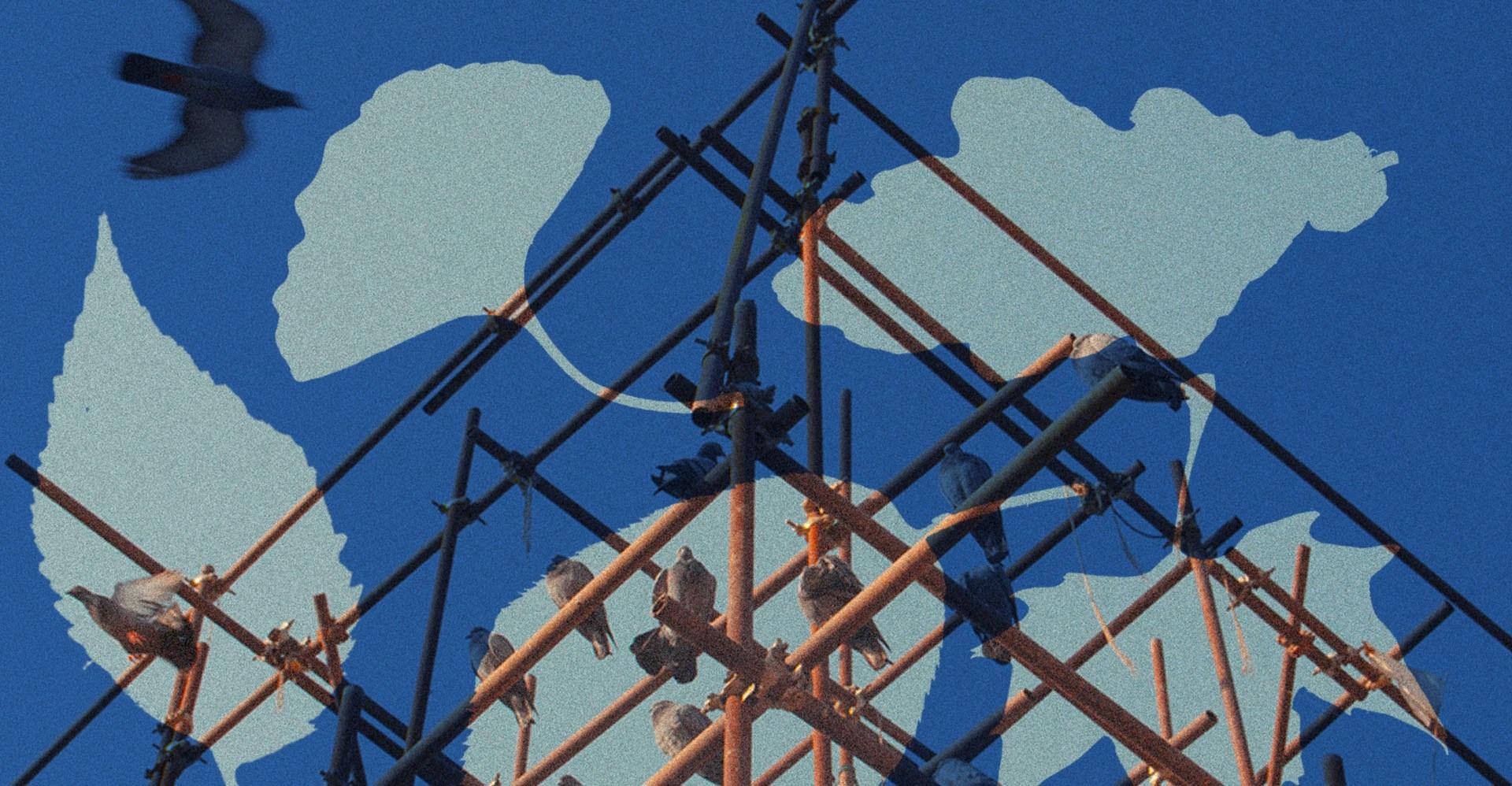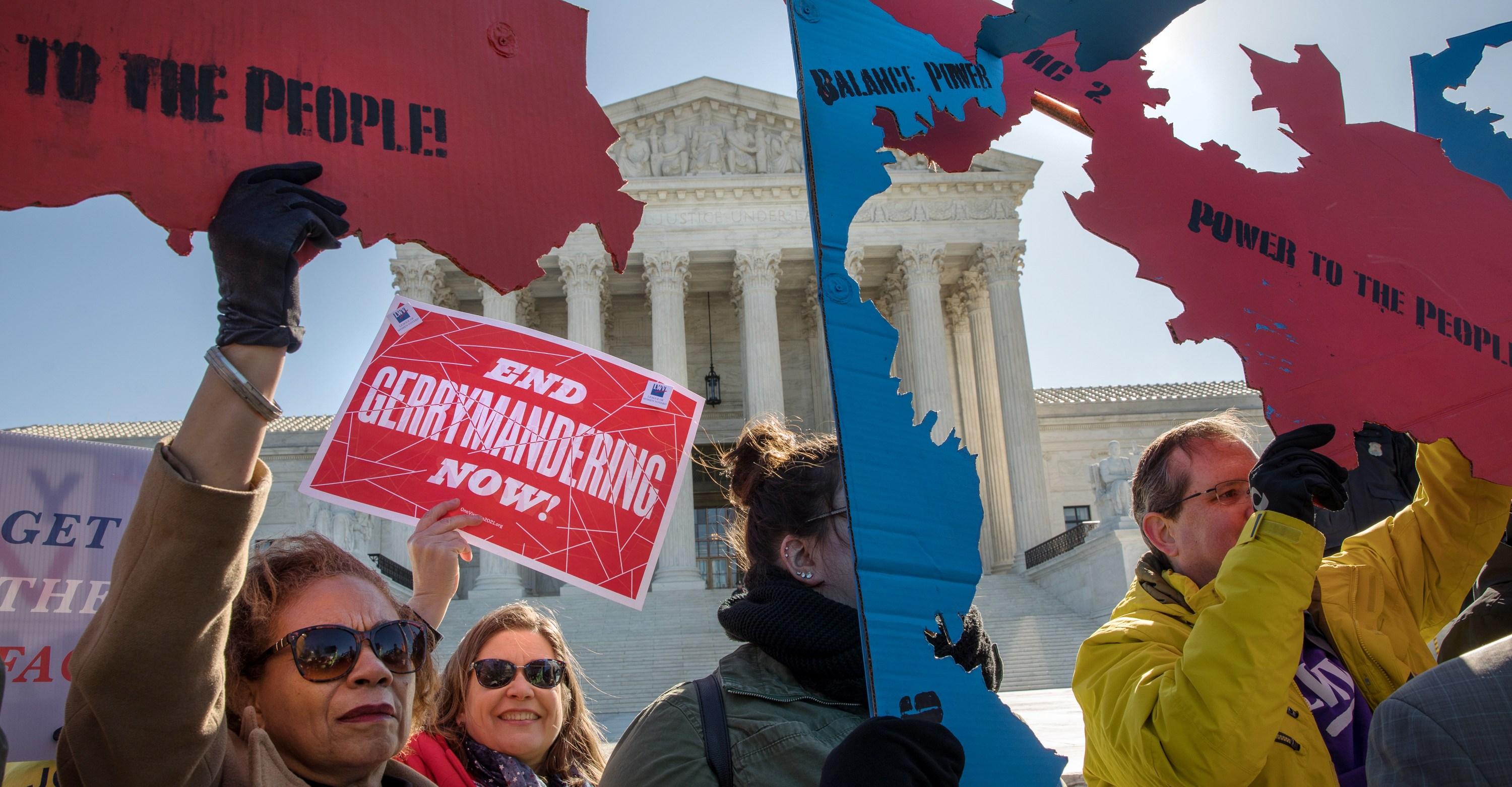This story is an excerpt from The Reactionary Spirit: How America’s Most Insidious Political Tradition Swept the World by Zack Beauchamp. Copyright 2024. Available from PublicAffairs, an imprint of Hachette Book Group, Inc. In April 1945, a young man named Da…

Published a year ago on Jul 18th 2024, 9:00 pm
By Web Desk

This story is an excerpt from The Reactionary Spirit: How America’s Most Insidious Political Tradition Swept the World by Zack Beauchamp. Copyright 2024. Available from PublicAffairs, an imprint of Hachette Book Group, Inc. In April 1945, a young man named David Rubin was about to die. A Jewish capmaker from a small town he called Pruzana, today known as Pruzhany in Belarus, Rubin had managed to survive the nightmare of Auschwitz for two years. Fearing the Allied advance, SS soldiers moved Rubin and 1,620 others to Buchenwald, a concentration camp in central Germany, and from there on a death march south into Bavaria. After about two days of torture, they entered a small town outside Munich called Ergoldsbach. A group of regular German army soldiers were in the town, lounging in the street with their vehicles. Rubin yelled, “Look, look!” to create a distraction, and quickly slid under a tank. He stayed there until the SS guards had gone. For the next two weeks, Rubin lived on scraps scrounged up by a friendly Polish worker; at one point, he hid from German soldiers in a pile of dry dung on a local farm. When the American army liberated the town at the end of the month, a soldier from Chicago found him lying in a street, unable to move his legs. Seeing Rubin’s Auschwitz tattoo on his arm, the soldier carried him to a hospital and ordered the Germans to take care of him. Once he recovered, Rubin became the leader of the small community of Jewish survivors stranded in Ergoldsbach. He met an American who worked for the US government’s refugee aid branch. The American tracked down a cousin of Rubin’s in the United States, a connection that eventually helped Rubin get permission to immigrate. About four years later, he and his new wife, Anita, also a Holocaust survivor, crossed the Atlantic. They settled near David’s family in Philadelphia, where their child was born — my mother, Ruth. I learned the details of David’s extraordinary story in 2011, six years after his death, thanks to a German scholar named Gerhard Strasser. Strasser had been working with residents of Ergoldsbach to document the history of the town during the Holocaust and invited our family to attend a ceremony presenting some of the findings. What I remember from that trip, more than anything else, are the children. Students at a local school had been assigned projects on Ergoldsbach’s Holocaust history, including researching and writing short presentations on Jewish survivors. This wasn’t just a normal school assignment; people from around the town came to watch their children recite stories of what had happened. In the audience, I waited anxiously to hear my grandfather’s name. Eventually, a German child stood up and told the class about David Rubin’s improbable survival and rise to leadership among the survivors. This was not merely a commemoration; it was repentance. In Ergoldsbach, I felt the weight Germans had put on themselves — and felt moved, as a Jew, that they still cared. While Americans have long clashed over our country’s cruel and bigoted past, Germans have undertaken one of the most thoroughgoing efforts of any nation on the planet to reckon with their history. Germany, perhaps more than any other country, has attempted to pull out by the roots its homegrown variant of the reactionary spirit — the tendency of opponents of social change to choose hierarchy over democracy, trying to constrain or even topple democracy to protect hierarchies of wealth and status. The Nazis were born out of disgust with post-World War I Weimar democracy, led by men furious about both the new government’s weakness and acceptance of the Jewish minority into German society. After Nazism brought Germany to ruin, preventing a reactionary resurgence became one of the central goals of the country’s subsequent leaders. So it’s all the more extraordinary that in the past few years, Germany’s far right has been on the rise. In 2015, at the peak of the global refugee crisis, German chancellor Angela Merkel announced an open-door policy for those fleeing violence in Syria and elsewhere. In response, the Alternative for Deutschland (AfD) party, a Euroskeptic faction without a single seat in Parliament, morphed into a virulently xenophobic force calling for Germany to slam Merkel’s open door shut. In 2017’s national elections, AfD won 94 seats in the Bundestag, turning it into Germany’s third-largest political party. Opposing the country’s approach to the migration policy did not, in and of itself, make AfD a threat to German democracy. But over time the party’s behavior has become more and more troubling. In 2020, AfD supporters participated in an attempted storming of the German capitol building, the Bundestag, in a protest over Covid-19 restrictions. In December 2022, German police busted an armed cell that was plotting to forcibly install a minor noble as Germany’s new kaiser. One of the coup plotters was a former AfD member of Parliament who was serving in a minor party leadership role at the time of her arrest. In February 2023, the executive vice president of the International Auschwitz Committee — a Berlin-based anti-hate group founded by Holocaust survivors — compared the party to the Nazis. Yet AfD’s rise has continued. Politico Europe’s average of German polls shows that, between July 2022 and 2023, the party’s nationwide support nearly doubled — going from 11 percent to 20 percent. By early 2024, AfD was solidly the second-most popular party in Germany; it won a new record vote share in June’s European Parliament election. The threat AfD poses to German democracy is, at least to some extent, contained by the German multiparty system, in which every mainstream party has so far refused to consider forming a national governing coalition with the AfD. But its rise illustrates something vitally important: That Germany, of all countries, could fail to prevent a surge in reactionary antidemocratic politics suggests there’s something eternal and enduring about the reactionary spirit. And there is something about our current time period that makes it especially likely to flourish — not just in Germany, but around the world. Political scientists often separate the rise of democracy into three broad waves. The first dates from the early 19th century to the years immediately following World War I. The second begins immediately after World War II, defined by the rebirth of democracy in western Europe and its emergence in a handful of postcolonial states. This would soon be eclipsed by a massive third wave beginning in the 1970s and lasting for somewhere around 40 years. During this period, dictatorships of both the right and the left fell almost everywhere: Latin America, East Asia, sub-Saharan Africa, and the Eurasian countries of the former Eastern Bloc. By the turn of the century, roughly half of all countries around the world were democracies. Democracy seems so normal, from a contemporary perspective, that it’s easy to lose sight of just how stunning this transformation was. Some variant of authoritarianism has been the default setting of human government for thousands of years. But in a little more than half a century, democracy went from nearly extinct — just 12 democracies survived the Second World War — to globally dominant. No single political system had ever conquered the entire planet so rapidly or so thoroughly. After the Berlin Wall fell in 1989, it appeared that the 20th-century triumph of democracy was complete. Having defeated fascism, its rival on the right, and communism, its rival on the left, Western-style liberal democracy truly faced no challenger. Its spread around the globe seemed assured. And for a few years, it was. The 1990s saw some of the most significant activity of democracy’s third wave, including across nearly all of Eastern Europe. Former communist states and Soviet republics — like Czechia, Hungary, and Estonia—democratized with remarkable speed. In some countries, the new democratic systems appeared to be fully stable in less than a decade. In ideological terms, the world appeared mostly Americanized in the sense that democracy was the barely contested benchmark by which governments were measured. Culturally and locally specific antidemocratic ideologies remained influential in countries like China and Iran. But those governments did not present any kind of plausible or attractive alternative vision for most people around the world. On the whole, the language of democracy — human rights, elections, free speech, individual autonomy — became the assumed argot of global politics. It was during this time that the phrase "end of history" entered the lexicon, thanks to a 1989 essay and subsequent book by political theorist Francis Fukuyama. Fukuyama argued that liberal democracy was the ultimate stage in the evolution of society. Fundamental forces in history, including deep human desires for recognition and equality, had buoyed it to global dominance. Fukuyama did not claim that this state of affairs would necessarily last forever. Instead, he predicted, the very triumph of the system contained the seeds of a future crisis. “No regime — no ‘socioeconomic system’ — is able to satisfy all men in all places. This includes liberal democracy,” he wrote in the book. “Dissatisfaction arises precisely where democracy has triumphed most completely: it is a dissatisfaction with liberty and equality. Thus those who remain dissatisfied will always have the potential to restart history.” Some of this “dissatisfaction” was visible soon after the Cold War’s end. In the 1990s, the far right began making its presence felt in a handful of European elections: Austria’s Freedom Party even entered a governing coalition in 2000 after a strong showing in the 1999 election. The 2000s and early 2010s saw varying signs of antidemocratic activity in consolidated democracies, from both the religious right (Recep Tayyip Erdogan’s consolidation of power in Turkey) and the socialist left (Hugo Chavez’s attack on democracy in Venezuela). But as the 2010s wore on, it became clear that something new was happening on the right across advanced democracies. The reactionary right had risen to power in the United States, Hungary, Israel, India, Brazil, and Poland. Extreme-right western European parties — some of which, like Germany’s AfD, had a tenuous relationship at best with democracy — enjoyed an unprecedented wave of electoral success, winning larger seat shares in Parliaments and joining governing coalitions in larger numbers. Every one of these new authoritarian movements presented itself as deeply and authentically democratic. While the parties openly attacked democracy-adjacent values — like liberalism, multiculturalism, or secularism — they all insisted that they supported the basic ideas of popular sovereignty and elections. This strategy reflected the enduring global democratic consensus: A 2017 Pew survey of people in 38 countries found that huge majorities, a country median of 78 percent, believed that “a democratic system where representatives elected by citizens decide what becomes law” was a good way to run a country. Recognizing this reality, autocrats around the world began singing a more democratic tune. In their 2022 book Spin Dictators, political scientists Sergei Guriev and Daniel Treisman quantitatively documented a transformation in global authoritarianism: a movement away from overt violent repression and toward manufacturing consent through ersatz elections and a managed press. Guriev and Treisman noted that this trend had even touched countries like Russia and Singapore, where public support for democracy as a governing system is far weaker than it is in the United States or western Europe. This, they argued, has a lot to do with democracy’s post-20th-century ideological dominance: On an interconnected planet where large portions of the world’s governments and citizens take democratic ideals seriously, even the most hardened authoritarian can face tangible consequences for open crackdowns on rights and freedoms. The result was that political movements everywhere, but especially ones in seemingly consolidated democracies, had powerful incentives to develop a democratic-sounding justification for their actions — to Americanize their politics. By identifying domestic “enemies” that stood in for unwanted social change, they learned to galvanize a chunk of the public against those enemies in the name of protecting the homogeneous majority — an ironically universal playbook for antidemocratic success. While studying the rhetoric of these new authoritarian movements helps explain how they appealed to a mass audience, it doesn’t explain why people were especially attracted to their political vision today. The theory of the reactionary spirit helps us understand this phenomenon. As democracy’s reach expanded across the globe, so, too, did political contests over inequality. That competition, one way or another, brought tensions over status and identity to the fore of the political conversation — ideal circumstances for the reactionary spirit to threaten democracies old and new. This is the underlying structural reality that helped the authoritarian right break through in country after country. Under such conditions, all it would take to start a reactionary fire was some kind of spark: an external shock, a high-visibility left-wing push for social change, canny leadership on the reactionary side, or some combination of all three (as in the United States in the post-Obama era). The 2010s saw a series of such trigger events around the world: decades of democratic expansion and evolving reactionary responses leading to a simultaneous surge in support for reactionary factions. In Europe, the 2015 refugee crisis played a central role in the story. That year, violent bloodshed in countries like Syria and Afghanistan produced the single greatest number of refugees since World War II, many of whom fled to Europe seeking a better life. The centrist European establishment, led by German chancellor Angela Merkel, chose to welcome them, creating an opportunity for far-right parties to increase their support among Europeans uncomfortable with a massive influx of people who looked different, prayed differently, and spoke different languages. The effect was swift and striking: Data from The PopuList, which catalogs far-right electoral support in European elections since 1989, shows a spike in these factions’ support around the continent in the wake of the crisis. Broadly speaking, the evidence suggests that European resentment toward immigration is rooted in concerns about changes to Europe’s traditional ethnic composition and hierarchy. A 2007 study that examined 20 European countries and over 38,000 individuals found that negative attitudes about multiculturalism were by far the best predictor of individual opposition to immigration. Many other factors, like a country’s unemployment level or a person’s individual income, had a negligible effect. This underlying hostility toward cultural difference created fertile grounds for far-right parties to profit from a sudden spike in immigrant numbers, especially since many immigrants came from nonwhite Muslim countries. A 2018 paper by two German political scientists, Matthias Mader and Harald Schoen, examined a survey that asked the same group of people their opinions on elections and immigration before and after the refugee crisis. They found that attitudes on immigration, on the whole, hadn’t changed much: The same people who disliked immigration before the crisis still did afterward. But their partisan allegiances had shifted dramatically; anti-immigrant voters who had supported Merkel’s CDU defected to the AfD in significant numbers. This is the reactionary spirit in action. The refugee crisis heightened the stakes for culturally conservative voters, forcing them to choose between centrist parties that were more welcoming to migrants and potentially antidemocratic extremists who opposed it. Many of them chose the latter, prioritizing preserving the traditional white-dominant society over protecting their democracy. Across Europe, far-right parties started to reap electoral dividends. In Hungary in particular, the surge in power of anti-immigrant politics allowed a government that had already moved in an authoritarian direction to push a new and potent propaganda line, harnessing the reactionary spirit to consolidate its hold on power. Similar events took place outside Europe. Post-Cold War Israel went through multidecade struggles over its ethnoreligious identity and occupation of Palestinian land, ultimately creating conditions for the reactionary spirit to spread from a small handful of extremists to a significant portion of the population. In India, the reactionary right’s rise began with a staged crisis designed to bring out the Hindu majority’s unease with India’s vision of equality. Fukuyama’s warning has proved prescient. Frustration with the dominant era of equality and liberal rights has kept history going, with the reactionary spirit threatening democracy even in its strongholds.

The Case for Growth
- a day ago

Dar meeting with the President of Kyrgyzstan: reaffirmation of commitment to strengthening bilateral cooperation
- 15 hours ago

Republicans want the Supreme Court to save them from their own inept mistake
- a day ago
Kiffin takes LSU job, won't finish year with Rebels
- 12 hours ago

Pakistan, Kyrgyzstan vow to boost ties in diverse fields
- 15 hours ago
Texas jumps to No. 2 behind UConn in AP Top 25
- 12 hours ago

The alt-right won
- a day ago

Republicans ask the Supreme Court to gut one of the last limits on money in politics
- a day ago

Spotify Wrapped 2025 turns listening into a competition
- 15 hours ago

Apple will reportedly refuse India’s order to preinstall a government app
- 15 hours ago

PM Shehbaz approves appointment of Field Marshal Syed Asim Munir as COAS, CDF
- 8 hours ago

Wooting’s 60HE v2 is a solid upgrade to the best gaming keyboard
- 15 hours ago
You May Like
Trending









